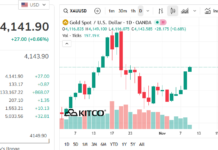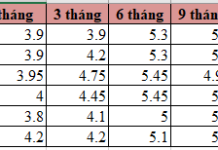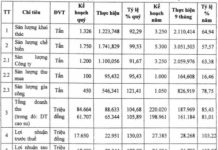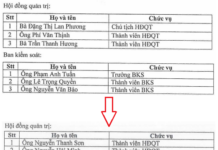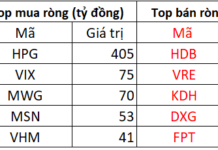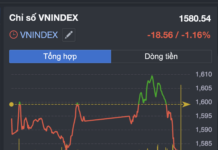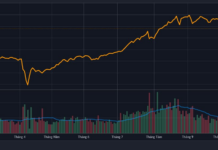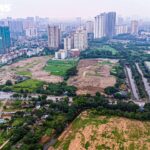The Ministry of Agriculture and Environment (MAE) is seeking public feedback from organizations and individuals to finalize the draft Law on Amending and Supplementing Several Articles of the 2024 Land Law before submitting it to the National Assembly for consideration at the 10th session of the XV term.
Unlocking Bottlenecks
According to the MAE, after more than a year of implementation, the 2024 Land Law has revealed a series of obstacles and challenges. The limitations in the current regulations not only hinder businesses in investment and project development but also directly affect the rights and interests of the people, especially in procedures such as land registration, change of land use purpose, land subdivision, and compensation in case of land revocation.
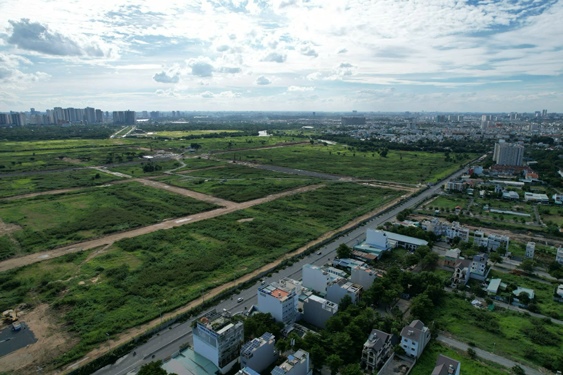
Experts believe that direct state pricing will help prevent speculative prices. |
One of the significant bottlenecks identified is the mismatch between land use planning and plans and the current model of a two-tier local government. The annual land use planning at the district level is no longer practical, causing delays, generating unnecessary procedures, and slowing down the process of land exploitation. Many households have missed out on production and business opportunities due to waiting for the land-use plan updates, resulting in considerable losses.
Regarding land allocation and leasing, most projects are currently carried out through auctions or bidding processes. However, these procedures are complex and overlapping due to their dependence on multiple laws, leading to prolonged project preparation.
Notably, the MAE proposes to clarify the state’s role in determining land prices as the representative of the owner. Accordingly, in the primary market, including land allocation, leasing, and change of land use purpose, land prices should be decided by the state and not influenced by consulting organizations. In the secondary market, involving land buying, selling, and mortgaging, land prices will be determined by mutual agreement between the parties, with indirect state regulation through planning, infrastructure, and financial instruments.
However, in reality, primary market pricing still heavily relies on consulting results and secondary market prices, while the specific methods for determining prices are inadequate, lacking transparency, and failing to reflect market dynamics. This diminishes the state’s regulatory role, affects project implementation progress, and causes dissatisfaction among people whose land is revoked but receive compensation that does not match the actual value.
Another issue highlighted by the MAE is the inaccuracy in applying valuation methods, especially the surplus method, which depends on market data, investment types, and land lease prices. Meanwhile, the land-use rights market is highly volatile, and data is mostly based on old prices, failing to reflect the actual value or future potential. As a result, people in rural areas, in particular, are often disadvantaged as the true value of their land is not accurately represented in transactions.
Dr. Pham Viet Thuan, Director of the Ho Chi Minh City Institute of Environmental Economics, asserts that amending the Land Law is necessary and aligns with the orientation of developing a socialist-oriented market economy. He points out that many provisions in the current law are out of touch with reality and business needs. Notably, the fees for converting land use purposes to residential land have skyrocketed, with increases of up to 38 times in some places, such as Ho Chi Minh City. This situation prevents many people from legally accessing their land-use rights.
Dr. Thuan supports the state’s role in determining primary market land prices as a move to curb market instability, especially in the current context of land speculation, auction bidding, and contract abandonment, which are driving up prices abnormally. However, he emphasizes the need to clearly distinguish between primary and secondary market prices in the pricing system. “Applying the coefficient K in guiding documents will enable the derivation of secondary market prices from primary market prices and serve as an effective tool for the state to regulate and stabilize the market,” he says.
The expert also stresses the importance of clearly defining the cases where primary market prices should be applied and where secondary market prices are applicable. Accompanying decrees and circulars will play a crucial role in concretizing and providing detailed guidance to ensure feasibility in practice.
Comprehensive Tools for Regulation and Transparency
While the proposal to grant the state the authority to determine primary market land prices is seen as necessary to ensure its role as the representative of the people’s ownership, concerns remain about the potential lack of market factors in pricing. This could lead to a resurgence of the “dual price” situation in the land market, affecting market transparency and potentially resulting in budget shortfalls and inequality among transaction participants.
The “dual price” situation was prevalent in the past, where the same plot of land had two different values: the price recorded in contracts and documents for calculating financial obligations was often significantly lower than the actual transaction price in the market. The main reason for this discrepancy was that the state-issued land price table failed to keep up with market fluctuations, leading to a substantial gap between the official and practical prices.
Mr. Vo Hong Thang, Deputy General Director of DKRA Group, cautions that if land prices are determined solely by the state without market reflection, it could lead to subjective valuation and a resurgence of the “dual price” mechanism. He emphasizes that valuation should be based on market principles to ensure fairness among all parties involved, including the state, businesses, and investors. Mr. Thang compares the situation to “playing and refereeing at the same time,” lacking an independent supervisory mechanism.
Instead of eliminating market factors, Mr. Thang suggests that the law should consider categorizing land users to provide appropriate support policies. For example, financial obligations could be waived or reduced for vulnerable groups when changing land use purposes, as proposed by many experts.
Meanwhile, Mr. Le Hoang Chau, Chairman of the Ho Chi Minh City Real Estate Association, believes that the concerns about the “dual price” situation and potential corporate profiteering from land policies are unfounded. He asserts that the state possesses comprehensive regulatory tools, ranging from taxation to credit control, to oversee the real estate sector and prevent profiteering. “The state has the right to determine land prices in the primary market as the representative of the people’s ownership. However, the secondary market, where civil transactions occur between individuals and enterprises, should be left to market forces,” he emphasizes.
In reality, tax control, notarization, and management of real estate transfer dossiers have been rigorously enforced in the last two years. Many individuals who used to underdeclare property transfer prices to save on taxes now comply with the regulations, as notary and tax authorities no longer allow such practices and even require corrections if significant discrepancies are identified. Mr. Pham Huu T., a real estate investor in Lam Dong, shares that he used to underdeclare property transfer prices to reduce costs but now strictly adheres to the rules. “Buyers also refuse to underdeclare prices because they worry about higher taxes when they sell the property in the future,” he says.
|
“Mr. Nguyen Dang Phu, a broker in Ho Chi Minh City, confirms that the practice of dual pricing has almost disappeared. The tax authorities have been closely monitoring this issue. Some cases of underdeclaration have been summoned and even warned of criminal prosecution. Now, both buyers and sellers are serious about complying, and whoever pays the tax bears the burden.” |
|
Curbing Speculative Prices According to Mr. Le Hoang Chau, determining prices through consulting organizations and appraisal councils can create loopholes and even lead to “collusion” in valuing land. Therefore, state pricing in the primary market is necessary. In the secondary market, market mechanisms should be fully operational, with state control through tax instruments. This approach not only ensures transparency in land pricing but also helps “cool down” the real estate market and prevents speculative price inflation. |
Son Nhung
– 07:00 05/08/2025
“Striking a Balance: Revising Land Valuation Tables for Sustainable Revenue and Community Wellbeing”
It is imperative that the land price lists published by local authorities are realistic and avoid being overly optimistic or pessimistic. Overvaluation can deter businesses, while undervaluation can lead to a significant loss in revenue for the government. A balanced and accurate assessment is crucial to fostering a healthy business environment and ensuring a stable financial outlook for the region.
Proposed Land Recall if 75% Agreement with Residents is Reached
The Ministry of Agriculture and Environment has proposed a new initiative to expedite land acquisition for development projects. In a bold move, the Ministry has suggested that if investors can secure compensation agreements with at least 75% of landowners, they will be granted permission to proceed with the land retrieval process. This proposal aims to strike a balance between the needs of investors and the rights of landowners, ensuring a smooth and efficient path toward progress.







